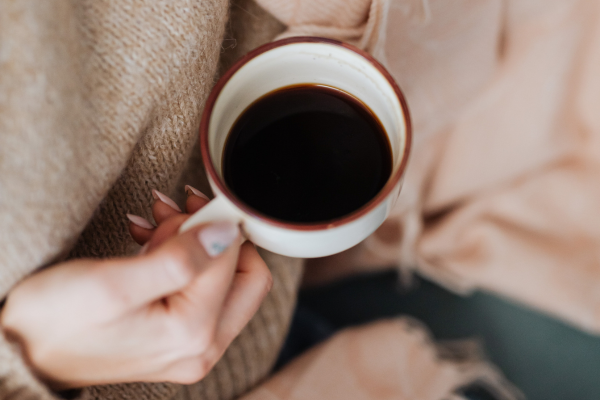Brewing coffee is an art and a science. It’s not just about pouring hot water over coffee grounds—each method you choose can dramatically change the flavor, strength, texture, and even the aroma of your drink. With so many options available, it’s important to understand the characteristics of each brewing method so you can find the one that best suits your taste and lifestyle.
Why Brewing Method Matters
The way you brew coffee affects everything from the richness and clarity to how much control you have over the process. Different methods highlight different aspects of the beans, and some offer more convenience, while others allow for deep experimentation. Choosing the right one can make your daily cup more enjoyable and satisfying.
Pour-Over (V60, Chemex)
The pour-over method involves slowly pouring hot water over coffee grounds in a cone-shaped filter. The water flows through the grounds and drips into a vessel below. This method produces a clean, bright cup with delicate flavors, especially if you’re using high-quality beans with fruity or floral notes. It offers full control over the variables—grind size, water temperature, and pour speed—but requires patience and practice. You’ll need tools like a gooseneck kettle and a paper or metal filter. Ideal for people who enjoy light to medium-bodied coffee with clarity and balance.
French Press
The French Press is a simple and accessible method. Coarse-ground coffee is steeped in hot water for around four minutes, and then separated using a plunger with a metal filter. This process preserves the natural oils of the coffee, resulting in a rich, full-bodied drink with a heavier mouthfeel. It’s perfect for those who enjoy bold coffee and don’t mind a little sediment. Cleanup is a bit messier, but the brewing process is straightforward and doesn’t require any fancy equipment.
Drip Coffee Maker (Electric)
Drip machines are common in many homes and offices due to their convenience. Water is heated and automatically dispersed over medium-ground coffee in a paper or reusable filter, with the brewed coffee collected in a pot. The flavor is usually consistent and smooth, though not as refined as manual methods. This method is perfect for those who want several cups of coffee quickly with minimal effort. It’s best to clean the machine regularly to prevent flavor deterioration.
Espresso Machine
Espresso machines push hot water through finely ground coffee at high pressure, resulting in a small, concentrated shot of coffee in about 30 seconds. The result is rich, complex, and intense, with a layer of crema on top. Espresso is the base for popular drinks like cappuccinos and lattes. Machines range from semi-automatic to fully automatic and require both a financial investment and some technical skill. This method suits coffee lovers who want barista-level drinks at home.
AeroPress
The AeroPress combines pressure and immersion to brew coffee in about two minutes. Coffee grounds steep briefly before being pressed through a paper or metal filter into a cup. It’s compact, travel-friendly, and easy to clean. The flavor is smooth, balanced, and less acidic than drip coffee. You can experiment with recipes to mimic espresso or pour-over style. It’s a favorite for travelers, minimalists, and people who like experimenting with brew ratios.
Moka Pot (Stovetop Espresso)
The Moka Pot is a stovetop coffee maker that brews strong, espresso-like coffee using steam pressure. Water in the lower chamber boils and rises through finely ground coffee into the upper chamber. The resulting brew is robust and concentrated, although not as smooth as espresso. Moka Pots are affordable, durable, and ideal for people who want strong coffee without a full espresso machine. Care is needed to avoid burning the coffee by overheating.
Cold Brew
Cold brew is made by steeping coarse-ground coffee in cold or room-temperature water for 12 to 24 hours. The result is a concentrate that can be served over ice or diluted with water or milk. The flavor is mellow, smooth, and low in acidity. This method is perfect for hot days and for people who prefer a less bitter cup. Although it requires planning ahead, a single batch can last for up to two weeks in the fridge, making it convenient for busy mornings.
Siphon (Vacuum Pot)
The siphon method uses vapor pressure and vacuum suction to brew coffee in a visually dramatic way. Water is heated in the bottom chamber, rises to the top to mix with coffee grounds, then gets pulled back down through a filter. The process is complex but produces a clean and elegant cup, often compared to tea. It highlights the delicate notes of light roasts. Siphon brewing is best for enthusiasts who enjoy precision, science, and a bit of flair in their coffee ritual.
How to Choose the Best Method for You
Each brewing method offers something unique. If you value clarity and subtlety, pour-over may be your go-to. For strength and richness, the French Press or Moka Pot might be better. If you’re short on time, a drip machine or AeroPress offers great results with minimal effort. And if you enjoy experimenting or want to impress guests, try a siphon or espresso machine.
Final Thoughts: Let Your Taste Be Your Guide
There’s no perfect coffee method for everyone—only the perfect one for you. Your lifestyle, flavor preferences, budget, and available time all play a role in choosing the right brewing style. Start with what you have, explore new techniques, and let your taste buds guide you. Coffee is more than a drink; it’s a personal experience. With the right method, you’ll enjoy every cup even more.

